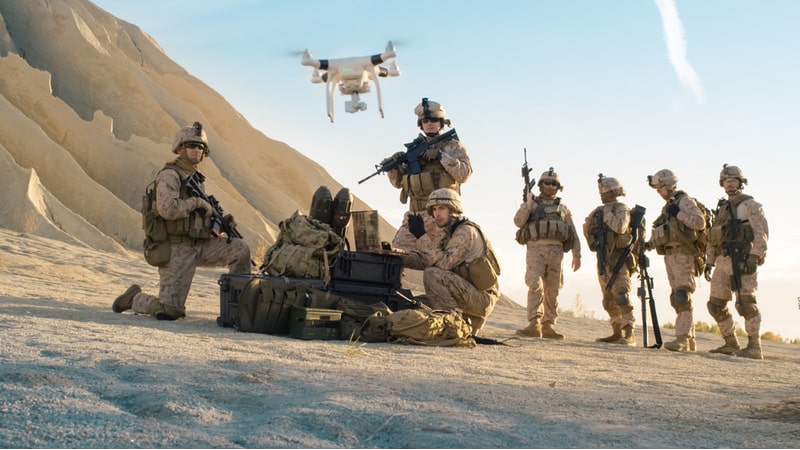
Thanks to an $8 million investment from the U.S. Army, a swarm of hundreds of unmanned air vehicles will soon descend on unmanned ground vehicles to autonomously recharge.
The Army explained that the Army Combat Capabilities Development Command’s Army Research Laboratory has awarded the University of Illinois Chicago a four-year, $8 million cooperative agreement to develop “foundational science in two critical propulsion and power technology areas for powering future families of unmanned aircraft systems, or UASs.”
Through the program, small battery-powered drones autonomously will be able to return from military missions to unmanned ground vehicles for recharging. The university is tasked with developing algorithms to enable route planning for multiple teams of small unmanned air and ground vehicles.
Currently, the small drones only have 26 minutes to complete their mission and return to base before their batteries die.
“Imagine in the future, the Army deploying a swarm of hundreds or thousands of unmanned aerial systems,” said Mike Kweon, program manager for the laboratory’s Versatile Tactical Power and Propulsion Essential Research Program. With the current battery and charging set up, “soldiers would need to carry a few thousand batteries on missions to facilitate this, which is logistically overwhelming and overall, [and] not conducive to a leading expeditionary military operation,” he said. “With this research project, we’re operationalizing scientific endeavors to increase Soldier readiness on the battlefields of tomorrow.”
The use of rapid, recharging batteries and wireless charging technologies will allow multiple small UAS craft to hover near unmanned ground vehicles for wireless charging, the Army explained. The new technologies will not require any soldier involvement.
“I believe this is the only way to realize practical UAS swarming, and small UAS and UGV teaming. Without solving how to handle the energy demand, all other advanced technologies using artificial intelligence and machine learning will be useless for the Army,” Kweon said. “On the battlefield, we do not have the luxury to replace batteries for 100s of UAVs and recharging them for hours.”
For larger drones, the Army is exploring other technologies. Specifically, it is funding researching into the science needed to develop miniaturized fuel sensors for future multi-fuel hybrid-electric propulsion systems. The fuel property sensors in development will help soldiers who operate fuel-based equipment measure fuel property in real time for the Army’s air and ground vehicles
“This research is critical not only for air vehicles but also ground vehicles, especially for the Army missions,” Kweon said. “The fuel sensor is telling the operator what type of fuel is being delivered from the fuel tank to the engine. This input signal can be used to intelligently tell the engine to adjust engine control parameters according to the fuel type to avoid any failures. This data can also be used to find root-cause failures if any engine component prematurely failed.”
